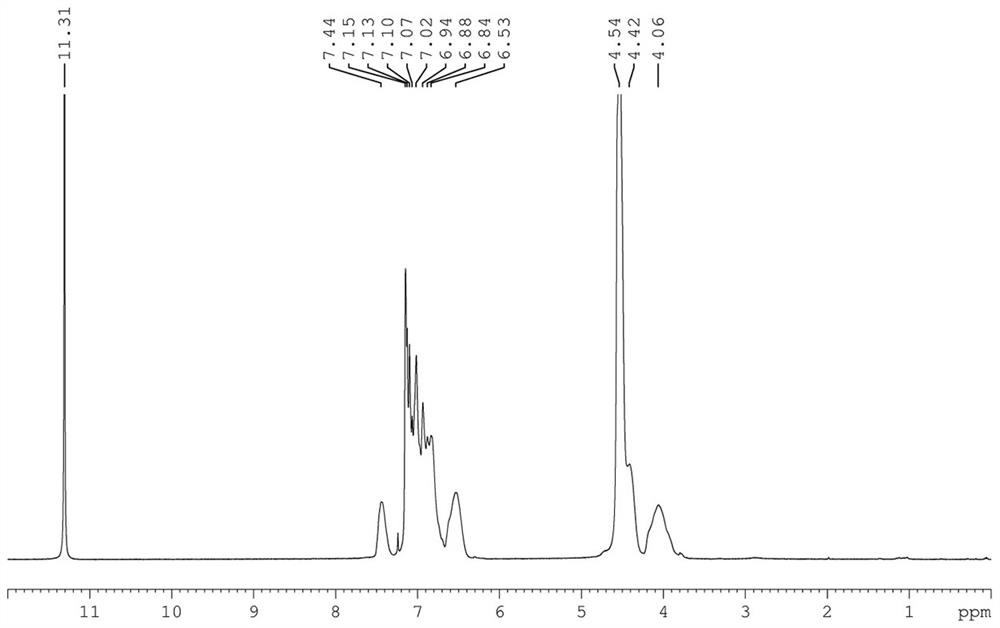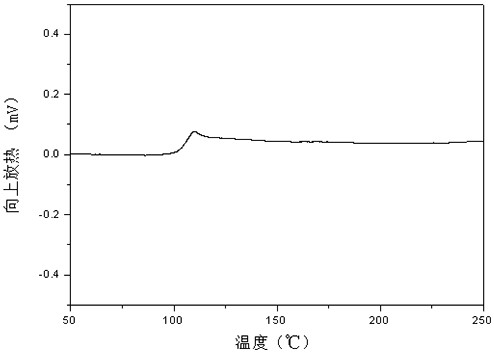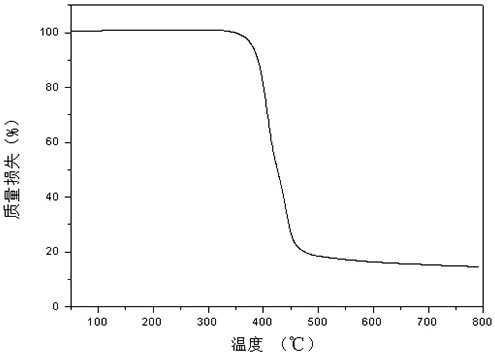Polyester with high glass transition temperature and low melting point, polyester products, its preparation method and application
A low melting point polyester, high vitrification technology, used in applications, flat products, other household appliances, etc., can solve problems such as insufficient heat resistance, achieve energy saving, good thermal oxidation stability, and increase glass transition temperature. Effect
- Summary
- Abstract
- Description
- Claims
- Application Information
AI Technical Summary
Problems solved by technology
Method used
Image
Examples
preparation example Construction
[0037] One aspect of the embodiments of the present invention provides a method for preparing a bio-based polyester with a high glass transition temperature and a low melting point, which includes:
[0038] Making the first mixed reaction system containing the first dibasic acid or its esterified product, bishydroxyethoxy polycyclic aromatic hydrocarbon, diol, esterification or transesterification catalyst react at 160-220°C to obtain an intermediate product, wherein the The first dibasic acid adopts furandicarboxylic acid;
[0039] reacting the second mixed reaction system comprising the intermediate product, polycondensation catalyst and stabilizer at 200-260°C under vacuum conditions to prepare bio-based polyester with high glass transition temperature and low melting point;
[0040] The bishydroxyethoxy polycyclic aromatic hydrocarbon has a structure as shown in formula (1):
[0041] .
[0042] In some embodiments, the first dibasic acid or its esterified product is pr...
Embodiment 1
[0113] Add dimethyl 2,5-furandicarboxylate, bishydroxyethoxy polycyclic aromatic hydrocarbons, and ethylene glycol into the reactor at a molar ratio of 1:0.20:2.1, and then add dimethyl 2,5-furandicarboxylate Anhydrous zinc acetate with a molar mass of 0.8‰, under the condition of nitrogen protection, gradually raise the temperature to 180°C, react for 4.0 hours, then add antimony trioxide with a molar mass of 1.0‰ of dimethyl 2,5-furandicarboxylate, 1.0‰ For trimethyl phosphate, gradually raise the temperature to 240°C, reduce the vacuum to 20Pa, and react for 3.5 hours to obtain poly-2,5-furandicarboxylic acid bishydroxyethoxy polycyclic aromatic hydrocarbon glycol copolyester, the structure of which is shown in formula (2 ), its intrinsic viscosity is 0.75 dL / g, NMR 1 H-NMR such as figure 1 As shown, the DSC curve is as figure 2 As shown, the glass transition temperature is 109°C, and the thermal weight loss T 5% at 380°C, the TGA spectrum is as image 3 shown. Moreov...
Embodiment 2
[0117] Add dimethyl 2,5-furandicarboxylate, bishydroxyethoxy polycyclic aromatic hydrocarbons, and ethylene glycol into the reactor at a molar ratio of 1:0.10:2.1, and then add dimethyl 2,5-furandicarboxylate Anhydrous zinc acetate with a molar mass of 0.7‰, under nitrogen protection, gradually heat up to 185°C, react for 3.5 hours, then add antimony trioxide with a molar mass of 0.7‰ dimethyl 2,5-furandicarboxylate, 0.8‰ Phosphorous acid, gradually increase the temperature to 235 ° C, reduce the vacuum to 10 Pa, and react for 3.5 hours to obtain 2,5-furandicarboxylic acid bishydroxyethoxy polycyclic aromatic hydrocarbon ethylene glycol copolyester with an intrinsic viscosity of 0.76 dL / g , the glass transition temperature is 99°C, 240°C, 1200g weight, the melt index is 51g, and the melt viscosity at 240°C is 220Pa. S.
PUM
| Property | Measurement | Unit |
|---|---|---|
| glass transition temperature | aaaaa | aaaaa |
| glass transition temperature | aaaaa | aaaaa |
| glass transition temperature | aaaaa | aaaaa |
Abstract
Description
Claims
Application Information
 Login to View More
Login to View More - R&D
- Intellectual Property
- Life Sciences
- Materials
- Tech Scout
- Unparalleled Data Quality
- Higher Quality Content
- 60% Fewer Hallucinations
Browse by: Latest US Patents, China's latest patents, Technical Efficacy Thesaurus, Application Domain, Technology Topic, Popular Technical Reports.
© 2025 PatSnap. All rights reserved.Legal|Privacy policy|Modern Slavery Act Transparency Statement|Sitemap|About US| Contact US: help@patsnap.com



